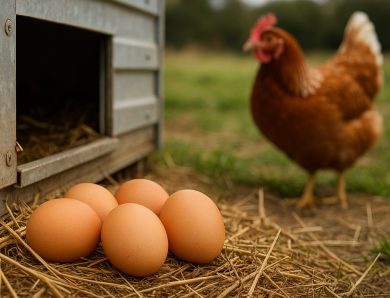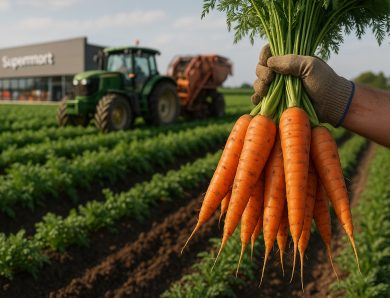
What Happens on a Sheep Farm During Shearing Season
Shearing season transforms a quiet sheep farm into a busy, methodical operation. Every movement has a purpose: to remove the fleece quickly, safely, and with minimal stress for the sheep. It’s a race against weather, logistics, and wool quality.
The Build-Up Before Shearing
Preparation is key. Farmers spend weeks getting everything ready:
- Booking shearers: Professional teams are scheduled months ahead.
- Gathering supplies: Clippers, oil, spare blades, tarps, and wool packs are essential.
- Holding yards ready: Sheep are mustered into smaller paddocks closer to the shearing shed.
- Fasting sheep: Sheep are usually off feed for 12–24 hours to prevent a full stomach during shearing, reducing injury risk.
Shearing Day: A Well-Oiled Machine
On the big day, the farm pulses with energy and precision. The process usually runs like this:
- Muster and Draft:
Sheep are gathered and sorted by age, breed, or wool type. Lambs, ewes, and rams are separated for better management. - The Shearing Shed:
Shearers work swiftly. Each shearer can clip 100–300 sheep in a day, depending on skill and sheep type. The goal is clean, smooth shearing in one piece without cuts. - Wool Handling:
Roustabouts gather the fleeces, throw them on skirting tables, and remove dirty or low-quality sections. Wool classers grade and sort the fleece into lines based on micron (fineness), length, color, and strength. - Pressing Wool:
Skirted fleeces are pressed into bales weighing about 180 kilograms each. These bales are labeled and prepared for sale.
Key Roles During Shearing Season
Several roles keep the operation moving:
- Shearers: Skilled at clipping efficiently with minimal stress to the animal.
- Roustabouts: Keep the board clean, collect fleece, and assist shearers.
- Wool Classers: Grade wool for market categories.
- Farm Manager: Oversees timing, welfare, and overall logistics.
- Wool Press Operators: Pack and label bales properly.
Animal Welfare Matters
During shearing, sheep welfare is non-negotiable:
- Gentle handling: Calm movement and secure holding pens reduce panic and injuries.
- Experienced shearers: Technique matters to avoid cuts and stress.
- Weather watch: Shearing is timed to avoid cold snaps that could expose newly shorn sheep to hypothermia.
- Post-shearing care: Sheep are checked for nicks or issues and monitored carefully for a few days.
After Shearing
Life returns to normal, but some steps remain:
- Wool transport: Bales are sent to warehouses or auctions.
- Sheep care: Sheep often receive treatments for parasites or wounds post-shearing.
- Pasture rotation: Freshly shorn sheep often move to better grazing paddocks to recover.
Quick Facts About Shearing Season
- Timing varies: In New Zealand, main shearing happens from November to February.
- Why shearing matters: Prevents heat stress, parasites, and fleece rot.
- One sheep, one fleece: A single fleece can weigh between 3–7 kilograms.
Shearing season reflects the mix of skill, care, and hard work that defines sheep farming. Every move, every clip, and every bale supports both the health of the flock and the future of the farm.




No Comment